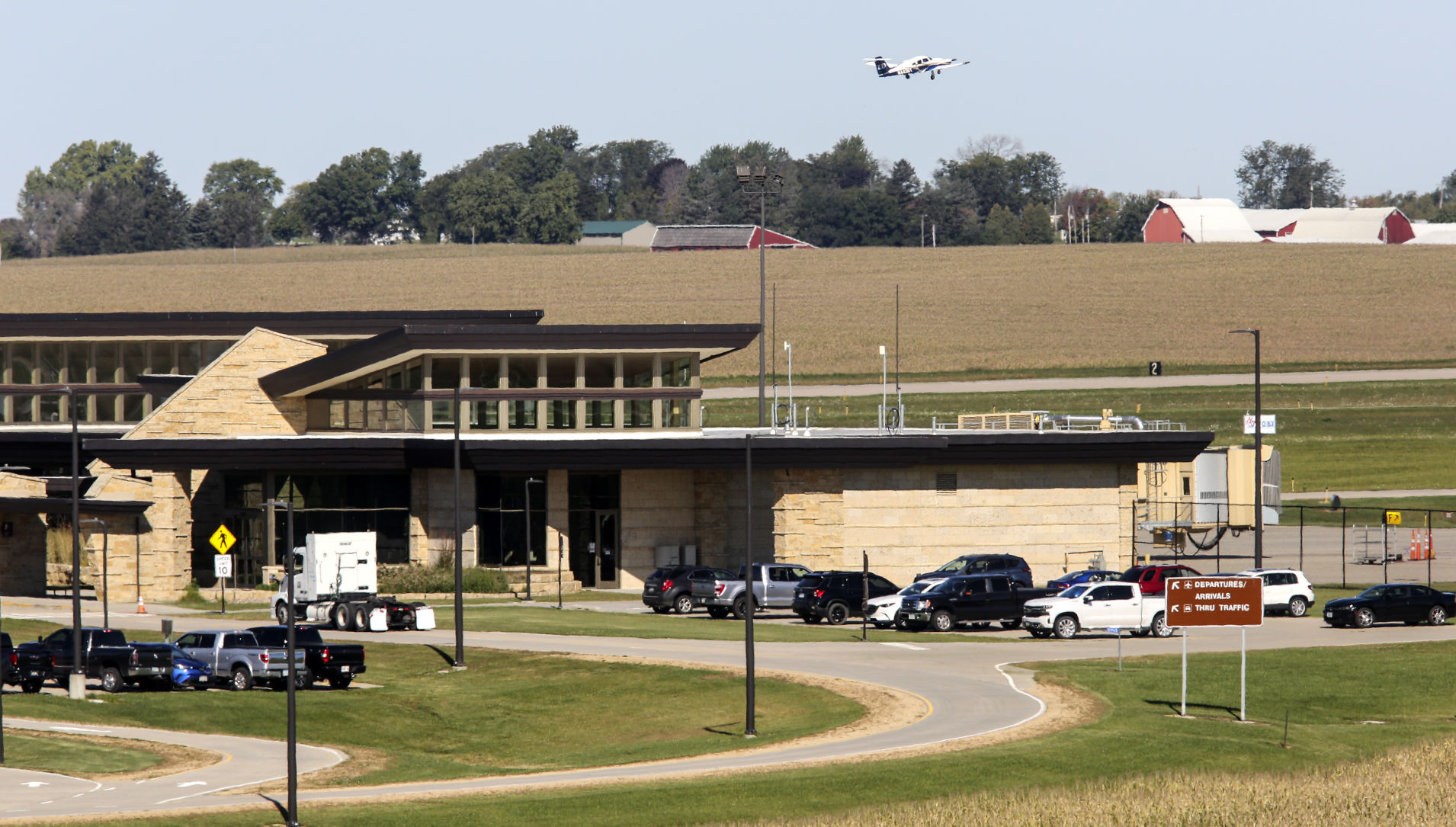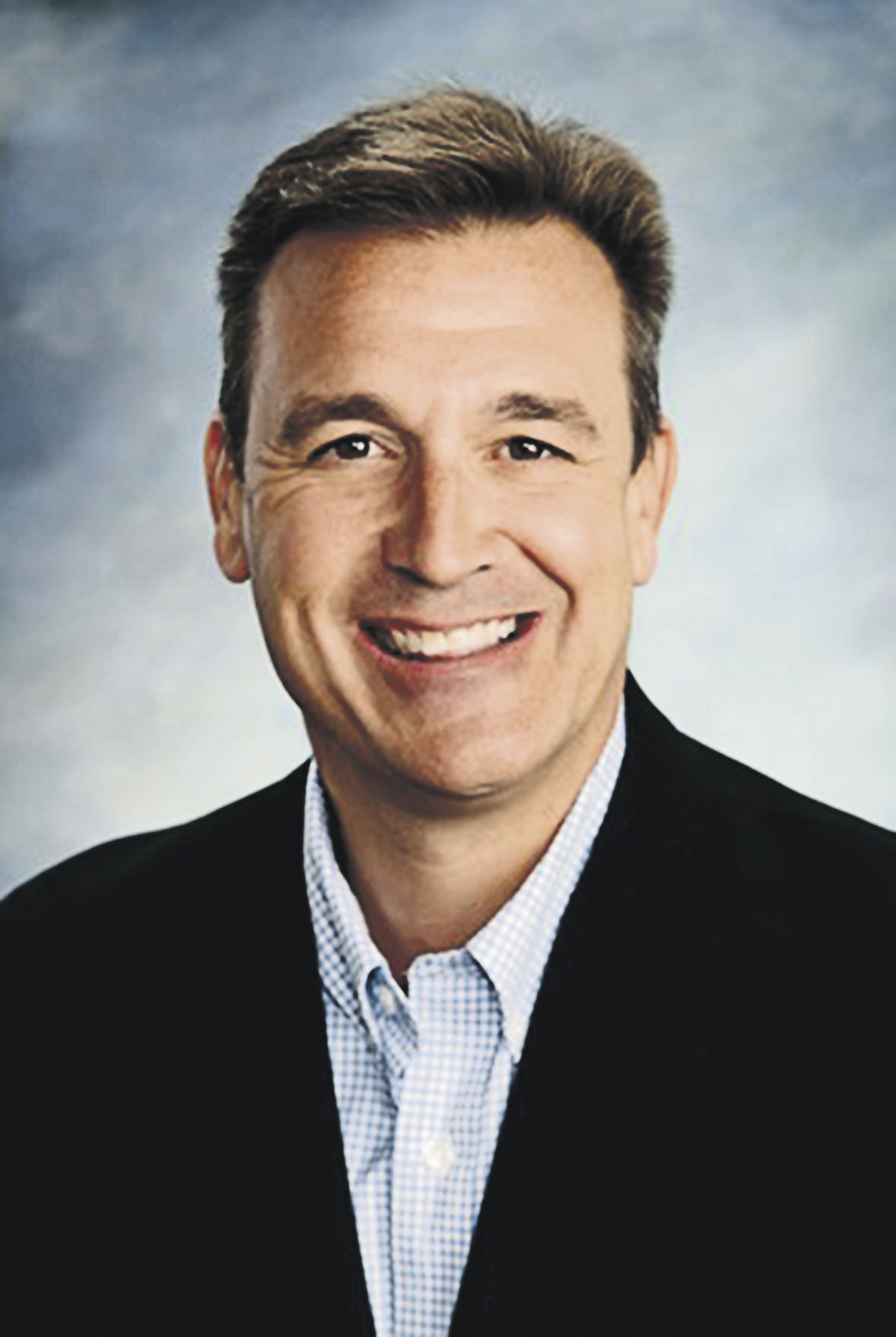The Dubuque Regional Airport could spend up to $152 million over the next 20 years on improvement projects, according to a newly completed master plan.
Airport officials presented the plan on Monday during a work session, which details a number of expansion and improvement projects the airport could pursue over the next 20 years as its number of annual passengers and airline operations continues to expand.
Primary among them is a $40 million project to construct a new airport apron on a 30-acre property located west of the airport, expansion of the main terminal building, development of additional commercial lots for light industrial use and the extension of airport runways and taxiways.
“We’re pretty much maxed out on space,” said Todd Dalsing, general manager of the airport. “The only logical direction for growth would be on the west side at this point.”
Mike Dmyterko, president of Coffman Associates, which assisted airport officials in developing the plan, said he supports development to the west, although it is expensive.
“But here’s the reality of your situation,” Dmyterko said. “You have very little room left in your terminal area.”
Dalsing said the Federal Aviation Administration recommends airports compose a new master plan every 10 to 15 years. Dubuque Regional Airport’s last plan was completed in 2005.
The plan, which provides a layout of anticipated short, medium and long-term projects, can assist the airport in securing federal funding for those projects.
“It gets us on the FAA’s radar, and shows that we are proposing to do these projects,” Dalsing said. “There is no guarantee we will get that funding, but it at least puts us in contention.”
The plan states that over the next five years, airport officials are seeking to spend about $32.6 million to expand parking at the main terminal and to expand major runways, along with a variety of smaller projects.
Over the next 10 years, airport officials intend to spend another $32 million on extending the main airport runway, expanding the main terminal building to allow for a second boarding bridge and constructing new taxiways. Dmyterko said the airport property has several spaces available that could serve as the location for new hangars through private-public partnerships.
By 2040, officials hope to complete work on a new apron on the west end of the property and construct new taxiways, hangars, public roadways and a fuel farm, all anticipated to cost about $87 million.
Dalsing said all of these planned projects are intended to give the airport more space to conduct airport operations and meet projected airport traffic needs. In 2019, the Dubuque Regional Airport served 39,780 passengers and conducted 59,797 airport operations, including commercial, general aviation and military flights. By 2040, the number of annual passengers is anticipated to increase to 52,600, while the total number of airport operations is expected to rise to 81,600.
Dalsing emphasized that the master plan doesn’t guarantee these projects will come to fruition, with several of them remaining contingent on federal funding.
Along with direct airport improvements, the plan also highlights potential development on the airport property, including the development of two solar arrays and commercial lots available for light-industrial use, primarily located near both the old terminal building and south of the new terminal building.
Dalsing said the establishment of more industrial buildings surrounding the airport property would act as a proper buffer between the airport’s main facilities and surrounding residential neighborhoods.
“We prefer a light industrial buffer that can separate us from residential development,” Dalsing said. “If it’s an industrial business that makes noise, we’re okay with that. We’re an airport.”
The plan will require future review and final approval from Dubuque City Council at a later date before it can be submitted to the FAA. Once approved, Dalsing said airport staff will work with the city in budgeting and seeking grant funding for the plans described in the project over the next several years.



